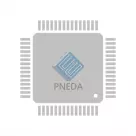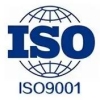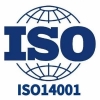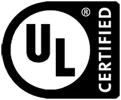Samsung started the trial production of the second-generation 3-nanometer process, aiming at 60% yield

Samsung Electronics recently announced that it has started trial production of the second-generation 3-nanometer process, aiming to achieve a yield of 60 percent. This is an important breakthrough for Samsung in microelectronics process technology and a key advance in its global semiconductor competition. This move by Samsung is not only expected to enhance its competitiveness in the global semiconductor market, but also to provide important technical support for the performance improvement and innovative development of global electronic products.
TSMC is the world's leading semiconductor manufacturer and Samsung's main rival. Both companies are actively courting customers and plan to achieve mass production of the second generation 3 nm GAA architecture process in the first half of the year. For Samsung, improving yield is one of the key factors, which will help attract customers who would otherwise choose TSMC.
Samsung is conducting performance and reliability tests on the SF3 pilot chip, and plans to first apply it to the Galaxy Watch 7 application processor, as well as the Exynos 2500 chip in the future Galaxy S25 series. This strategy shows that Samsung will improve its competitiveness and strengthen its market position by applying its advanced process technology to its own products.
It is worth noting that if the SF3 can steadily meet the expected production and performance standards, some customers who originally chose TSMC may reconsider their cooperation with Samsung. Qualcomm, as one of the world's leading chip design companies, is particularly important to Samsung. Currently, Qualcomm is working with TSMC to produce a new generation of Snapdragon 8 Gen 3 chips. However, if Samsung can provide competitive process technology and meet Qualcomm's needs, then Qualcomm may consider returning to Samsung.
Samsung's second-generation 3nm process trial production is a deepening and optimization based on its first-generation 3nm process technology. Samsung's successful first-generation 3-nanometer process technology has taken a leading position in global semiconductor process technology, and its performance and power consumption have exceeded today's mainstream 5-nanometer process technology. The second-generation 3-nanometer process technology will further improve performance, reduce power consumption, and improve integration on the basis of the first generation, so as to further improve the performance of CSD87330Q3D chips.
Samsung's target yield of 60% means that it hopes that 60% of the chips can meet the expected performance and power standards during the process trial production process. This goal is a challenge for current microelectronics process technology, but Samsung said it is confident that through technological innovation and optimization, it can achieve this goal.
Samsung's second-generation 3-nanometer process trial production is expected to further promote the development of global semiconductor technology. At present, the global semiconductor technology is at a critical turning point, and major manufacturers are actively developing more advanced process technology to improve the performance and power consumption of chips to meet the needs of future electronic products. This move by Samsung will undoubtedly provide more possibilities for the development of global semiconductor technology.
For Samsung, the success of the second-generation 3-nanometer process trial production will not only enhance its competitiveness in the global semiconductor market, but also further enhance its position in the global electronics market. It is reported that Samsung is actively laying out the future electronic product market, including artificial intelligence, cloud computing, Internet of things and other fields. The second generation of 3-nanometer process technology will provide more powerful performance support for these future electronic products.
In general, Samsung's second-generation 3-nanometer process trial production is an important breakthrough in semiconductor technology. In the future, we expect Samsung to promote the development of global semiconductor technology through this technology and provide more technical support for the innovation and development of global electronic products.
Die Produkte, an denen Sie interessiert sein könnten
 |
CAR2512FPBC5-Z01A | AC/DC CONVERTER 12V 2500W | 5166 More on Order |
 |
ATS020A0X3-SRZ | DC DC CONVERTER | 2394 More on Order |
 |
UNDT006A0X3-SRZ | DC DC CONVERTER 0.45-5.5V | 7704 More on Order |
 |
QPW025A0F641-HZ | DC DC CONVERTER 3.3V 83W | 3240 More on Order |
 |
EHW007A0B841Z | DC DC CONVERTER 12V 84W | 8874 More on Order |
 |
AXH010A0X-SR | DC DC CONVERTER 0.7525-3.63V 36W | 3418 More on Order |
 |
AXH010A0P | DC DC CONVERTER 1.2V 12W | 4248 More on Order |
 |
APXH020A0X3-SRZ | DC DC CONVERTER 0.6-3.63V 73W | 4320 More on Order |
 |
QW015A0F81Z | DC DC CONVERTER 3.3V 50W | 6048 More on Order |
 |
JNW350R641-TZ | DC DC CONVERTER 28V 350W | 3726 More on Order |
 |
QW020A0Y1 | DC DC CONVERTER 1.8V 36W | 3852 More on Order |
 |
QHW075A1 | DC DC CONVERTER 5V 75W | 8658 More on Order |
 |
LW015A961 | DC DC CONVERTER 5V 15W | 8280 More on Order |
 |
JFC100C1 | DC DC CONVERTER 15V 100W | 7866 More on Order |
 |
HW006A6A1-S | DC DC CONVERTER 5V 33W | 3454 More on Order |
 |
JNCW016A0R64-18Z | DC DC CONVERTER 28V 448W | 2160 More on Order |
 |
EHHD006A0B641-HZ | DC DC CONVERTER 12V 72W | 5328 More on Order |
 |
NSR060A0X43Z | DC DC CONVERTER 0.6-5V 300W | 8154 More on Order |
 |
MVT040A0X3-SRPHDZ | DC DC CONVERTER 0.45-2V 80W | 3420 More on Order |
 |
ESTW010A0A4Z | DC DC CONVERTER 5V 50W | 8298 More on Order |
 |
PVX006A0X43-SRZ | DC DC CONVERTER 0.6-5.5V 33W | 8532 More on Order |
 |
AXA016A0X3-SRZ | DC DC CONVERTER 0.8-5.5V 88W | 12672 More on Order |
 |
KHHD010A0A41Z | DC DC CONVERTER 5V 50W | 12672 More on Order |
 |
AXA005A0X-SRZ | DC DC CONVERTER 0.8-5.5V 27W | 13722 More on Order |









